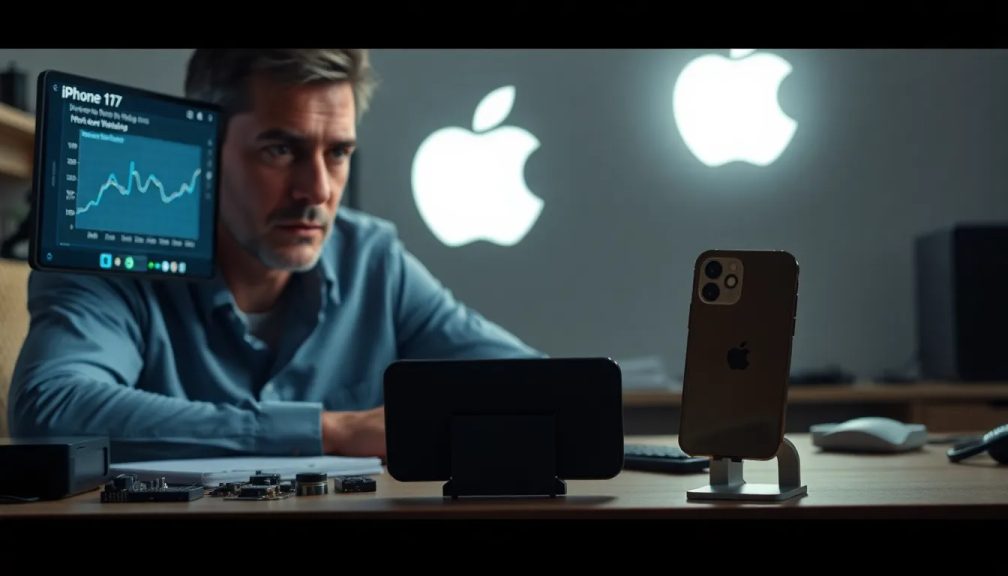Apple admits iPhone 17 Air C1X modem falls short of Qualcomm

The launch of the iPhone 17 Air marks a significant shift in Apple's approach to mobile technology, ushering in a new era with its proprietary modem, the C1X. This innovation is particularly noteworthy for several reasons, but it also comes with an admission that may surprise many: while Apple has developed its high-performance modem, it is not quite on par with Qualcomm's offerings in terms of speed and overall capabilities. This revelation signals a strategic pivot for the company, as it aims for greater control over its chip technology while balancing performance and efficiency.
- Apple acknowledges Qualcomm's dominance: the C1X modem's performance limitations
- Understanding Apple's self-sufficiency strategy
- Broadcom's role in Apple's transition: the N1 chip
- Challenges ahead: maintaining performance while reducing reliance
- Comparing the iPhone 17 Air with other models
- Conclusion: Apple's path towards independence
Apple acknowledges Qualcomm's dominance: the C1X modem's performance limitations
Apple's C1X modem represents the second generation of its modem technology, debuting exclusively in the iPhone 17 Air. This advancement, according to Arun Mathias, Apple's Vice President of Wireless Technologies, is advertised as being "up to twice as fast" as its predecessor, the C1, and achieving a 30% improvement in energy efficiency compared to the Qualcomm chip used in the iPhone 16 Pro. Despite these claims, the reality is that Apple still relies on Qualcomm for its iPhone 17, 17 Pro, and 17 Pro Max models, indicating that the transition to full independence in modem technology is far from complete.
Apple's candid admission during a recent interview with the BBC highlights the challenges it faces. The company stated:
"It may not yet be as good as Qualcomm's in terms of performance and overall capability, but they can control it and make it work with less energy. This leads to better battery life."
This recognition underscores Apple's ongoing journey toward self-sufficiency in chip manufacturing, a goal that has seen mixed results thus far. While the company is making strides, the fact that they are still reliant on Qualcomm for certain models raises questions about the feasibility of their long-term strategy.
Understanding Apple's self-sufficiency strategy
Apple's ambition to develop its own chips is not a recent endeavor; it reflects a long-standing goal to reduce dependency on third-party suppliers. The move towards the C1X modem is part of a broader strategy that includes:
- Improved control over hardware and software integration
- Enhanced energy efficiency and performance
- Reduction of costs associated with third-party licensing
- Increased innovation potential by having complete control over design
This shift mirrors Apple's previous experiences with Intel and its System on a Chip (SoC) lineup, where the company transitioned to designing its processors, leading to significant performance gains.
Broadcom's role in Apple's transition: the N1 chip
While Apple is striving for independence from Qualcomm, it is also working to reduce its reliance on Broadcom, a key supplier of Wi-Fi and Bluetooth solutions. The introduction of the N1 chip marks a significant step in this direction. Although Apple avoids making direct comparisons, it emphasizes that the N1 enhances energy management and allows for geolocation through Wi-Fi networks without relying on GPS.
"What many people may not realize is that Wi-Fi access points help the device recognize its location, eliminating the need for GPS, which consumes more energy," Apple explained.
This capability illustrates Apple's dual focus on performance and energy efficiency, which is crucial as consumers increasingly demand longer battery life from their devices.
Challenges ahead: maintaining performance while reducing reliance
Despite the advancements represented by the C1X and N1, Apple faces significant challenges in proving that it can fully replace Qualcomm and Broadcom without compromising user experience. Key considerations include:
- Ensuring reliable performance across various network conditions
- Maintaining a competitive edge in technology innovation
- Addressing potential consumer concerns about performance dips
- Complying with regulatory pressures and tariffs affecting chip manufacturing
As Apple continues to transition its chip production to domestic facilities, it adds another layer of complexity to its strategy. The company aims to achieve a balance where efficiency and integration take precedence over raw performance metrics, which could redefine user expectations in the smartphone market.
Comparing the iPhone 17 Air with other models
The iPhone 17 Air, equipped with the C1X modem, offers a unique position within Apple's product lineup. Here’s how it compares with the iPhone 17 and iPhone 17 Pro Max:
| Feature | iPhone 17 Air | iPhone 17 | iPhone 17 Pro Max |
|---|---|---|---|
| Modem | C1X | Qualcomm | Qualcomm |
| Battery Life | Improved Efficiency | Standard | Standard |
| Price | More Affordable | Medium | Premium |
This differentiation is crucial as Apple seeks to cater to a broader audience while also appealing to power users who may prefer the performance capabilities of the Pro models.
Conclusion: Apple's path towards independence
Apple's foray into developing its modems and chips marks a crucial step in its quest for technological independence. As the company grapples with the complexities of chip development and supplier relationships, it must continue to innovate to meet consumer expectations without sacrificing performance. The journey is ongoing, and how it navigates these challenges will significantly impact its future in the competitive smartphone market.
For further insights into the innovations behind the iPhone 17 Air, check out this video that discusses the revolutionary aspects of the device:




Leave a Reply